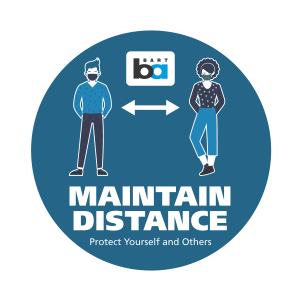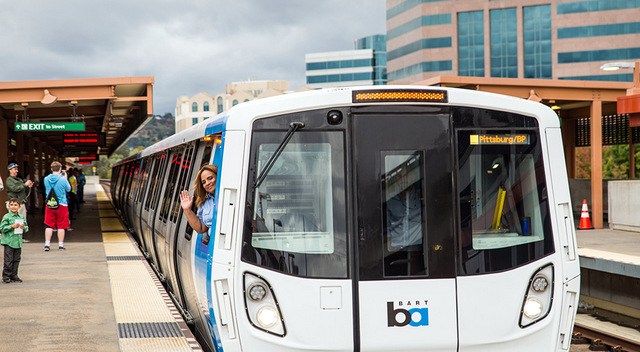BART Prepares for a Gradual Reopening
During the COVID-19 shutdown, public transportation ridership has plummeted, both because offices are closed and because people are afraid to ride it. BART, the San Francisco Bay Area’s multi-county train system, normally carries something like 400,000 people a day, but now are offering a severely curtailed schedule to a small fraction of that ridership.

Pandemic signage
I know what it’s like because before the shutdown, I rode BART every day into San Francisco from my suburban community. There were many times when we were pressed together so closely that our bodies were touching and our faces were a foot apart. That’s definitely not safe during a pandemic (or desirable anytime)!
I received a detailed email from BART a few days ago outlining 15 things they are doing to prepare for the return of riders as businesses begin to reopen. I’ve summarized them here, but you can learn more on their website.
BART’s 15-Step Plan
BART is:
- Disinfecting the trains and cleaning station touchpoints with hospital-grade disinfectant.
- Running longer trains to enable social distancing. They estimate 30 people to a train is the limit.
- Running trains on a 30-minute weekday schedule and closing at 9 p.m., but they will monitor it and increase frequency as demand increases.
- Changing seat configurations on the new trains to create more space for social distancing.
- Requiring face masks at all times for riders 13 and older. They will keep this requirement regardless of changes in county mandates. Some free masks will be available at the station at first, and they are planning to install vending machines.
- Enforcing the face mask policy with BART Police presence.
- Posting decals, posters and banners to inform riders of the new requirements and changes.
- Offering hand sanitizer.
- Encouraging the use of contactless Clipper Card payment and online loading of funds to the cards. The Clipper Card method is much better than paper tickets, which the system was phasing out already at the time of the outbreak.
- Offering personal hand straps–free at first and later for sale.
- Posting daily ridership numbers and train car loading data at http://www.bart.gov/covid. This is intended to reassure riders with concerns about crowding.
- Exploring new technologies, such as ultraviolet disinfecting, and figuring out how to implement them safely and in a way that won’t cause damage.
- Encouraging businesses to offer staggered work hours to spread out the commute. BART is also participating in virtual town halls to answer questions.
- Supplying its workers with personal protection equipment (PPE) and giving COVID-19 testing.
- Using time of low ridership to accelerate infrastructure rebuilding projects.

BART’s looking to welcome folks back
I don’t know when I will be riding BART again, but this sounds like a comprehensive list, which is reassuring. It will have to be carried out effectively, of course, and over time, riders will return. If more people find themselves working from home more often or permanently that will help solve the crowding issue for BART. Then it will remain a profit/loss issue, which has been an ongoing problem. We need our public transit systems, so I am hoping this can be solved.
Related Article
No Related Article
